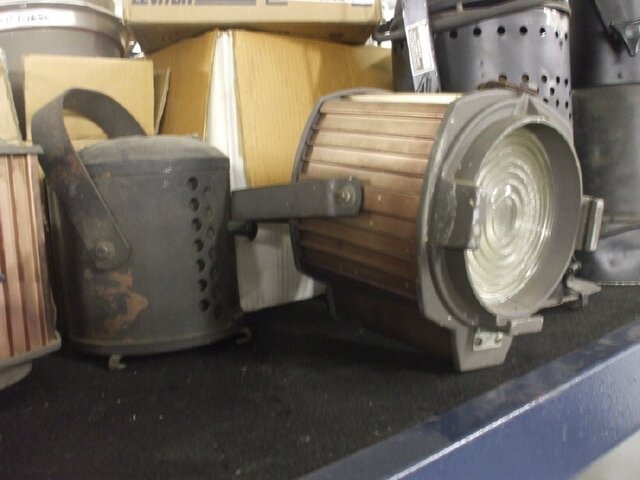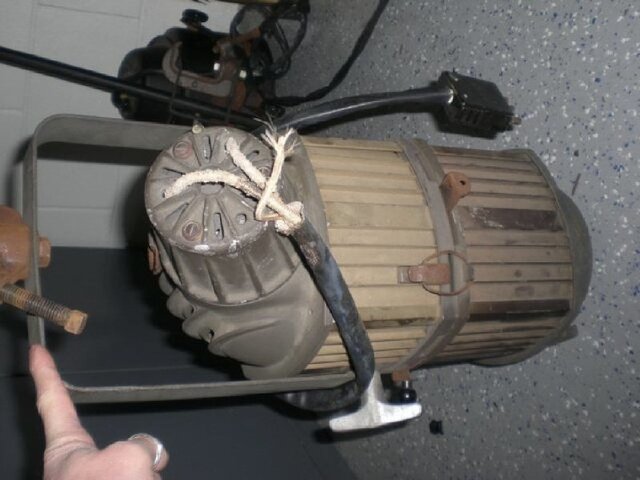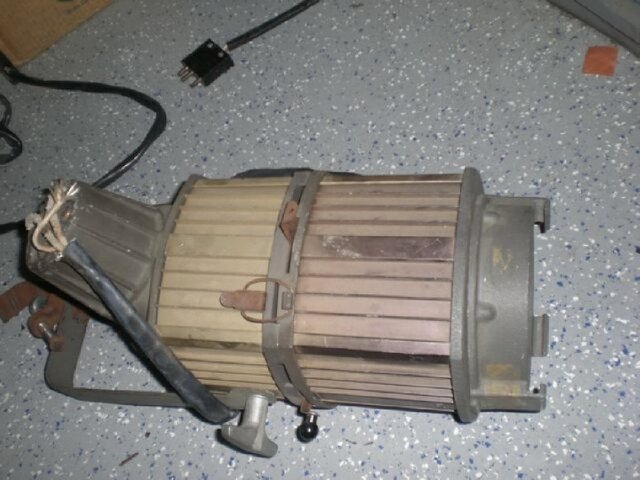Finally finished re-wiring the last of my current stock of old fixtures. Last of them were four Fresnels that were very similar to two Lekos. None had brand names on them, yet I could swear I had seen them before. My boss also had used them while in school but couldn't confirm the brand. Went up and down the chain of command at various lighting suppliers and manufacturers, schools, theaters and lamp companies and finally someone gave the brand it is for sure.
New fixture manufacturer for me - Grand Stage. Been a theater supplier for about a hundred years now, at some point during that they were also making fixtures before they sold out that wing to Major who later went out of Business.
Clearly remembers being brought into the factory area in being shown the standardized parts raw stock four piece fluted side plates which are universal with the front casting. Excellent!!! after driving me crazy for a week or more a brand.
Was a very difficult search given only Strand, Altman and Kliegl have archives. Oldest Colortran/Berkey catalog I have is from the 70's and these fixtures are mid to late 60's and while the yoke knobs on the Lekos were confirmed to be L&E as the only part on them with a name, they had no knowledge of the fixtures. No stamps stickers or castings on lenses, reflectors or plates saying Major as normally done by them and suspected to be as Major. Major might have started making the fixture after buying out the design from Grand Stage - some remembered them to be Major, but these without stamps have to be Grand Stage. Especially the Fresnel lenses and all reflectors should have been stamped Major not Kopp if Major because all their brand was made by them. Slight hanging point with this original conformation to be Major.
Working on getting old light fixture catalogs from the other than above brands and scanning them into the computer. At that point I'll work with Dave on him making a section of this website for old fixture catalogs so others hopefully in the future won't be faced with fixtures of other brands not in Photometrics catalog or otherwise able to find.
By the way, the one to the left of the Grand Stage Fresnel is from Display Stage Lighting as marked on the lens. Interesting fixture, has no bottom area for the lamp base slider assembly and uses a medium screw lamp instead of medium pre-focus. Dates back to about the early 1930's I think as opposed to about 1967 for the Grand Stage fixtures.
New fixture manufacturer for me - Grand Stage. Been a theater supplier for about a hundred years now, at some point during that they were also making fixtures before they sold out that wing to Major who later went out of Business.
Clearly remembers being brought into the factory area in being shown the standardized parts raw stock four piece fluted side plates which are universal with the front casting. Excellent!!! after driving me crazy for a week or more a brand.
Was a very difficult search given only Strand, Altman and Kliegl have archives. Oldest Colortran/Berkey catalog I have is from the 70's and these fixtures are mid to late 60's and while the yoke knobs on the Lekos were confirmed to be L&E as the only part on them with a name, they had no knowledge of the fixtures. No stamps stickers or castings on lenses, reflectors or plates saying Major as normally done by them and suspected to be as Major. Major might have started making the fixture after buying out the design from Grand Stage - some remembered them to be Major, but these without stamps have to be Grand Stage. Especially the Fresnel lenses and all reflectors should have been stamped Major not Kopp if Major because all their brand was made by them. Slight hanging point with this original conformation to be Major.
Working on getting old light fixture catalogs from the other than above brands and scanning them into the computer. At that point I'll work with Dave on him making a section of this website for old fixture catalogs so others hopefully in the future won't be faced with fixtures of other brands not in Photometrics catalog or otherwise able to find.
By the way, the one to the left of the Grand Stage Fresnel is from Display Stage Lighting as marked on the lens. Interesting fixture, has no bottom area for the lamp base slider assembly and uses a medium screw lamp instead of medium pre-focus. Dates back to about the early 1930's I think as opposed to about 1967 for the Grand Stage fixtures.






